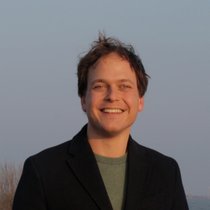As a Program Developer with a focus on Circularity in Urban Regions (CUR), Gerard initiates and develops research programs aimed at advancing the transition to a circular economy. These programs are designed together with scientific researchers collaborating with AMS, as well as partners from the public and private sectors. They balance scientific relevance and innovation to deliver practical and tangible results that can help cities here and now.
Key topics of interest include sustainable urban development, circularity in the built environment & infrastructure, industrial symbiosis, waste management, water & sanitation, and the development of insights and data needed to enable circular and sustainable resource use in cities, developing the physical infrastructure (e.g., data and modelling of material flows and environmental impact assessment in key sectors and value chains).
Gerard has extensive experience working on sustainable cities. He has worked in consultancy as the director of Metabolics Cities & Built Environment division, engaged in academic and professional education at the University of Amsterdam, and served as a policy advisor to the Dutch national government. In Amsterdam, he has co-developed De Warren, an apartment complex at the forefront of cooperative and sustainable housing in Amsterdam & Netherlands.
In his work as a Program Developer at AMS, he can continue to drive the circular transition, both in the city and (inter)nationally. He hopes that, together with partners in the city, he can build a project portfolio that will help Amsterdam achieve its goal of becoming a truly circular city by 2050.
“I’m eager to drive research that fundamentally changes how we build, live, and work in cities. And to support the implementation of the knowledge and innovations as soon as they are developed.”
Gerard Roemers
Program Developer Circularity in Urban Regions
